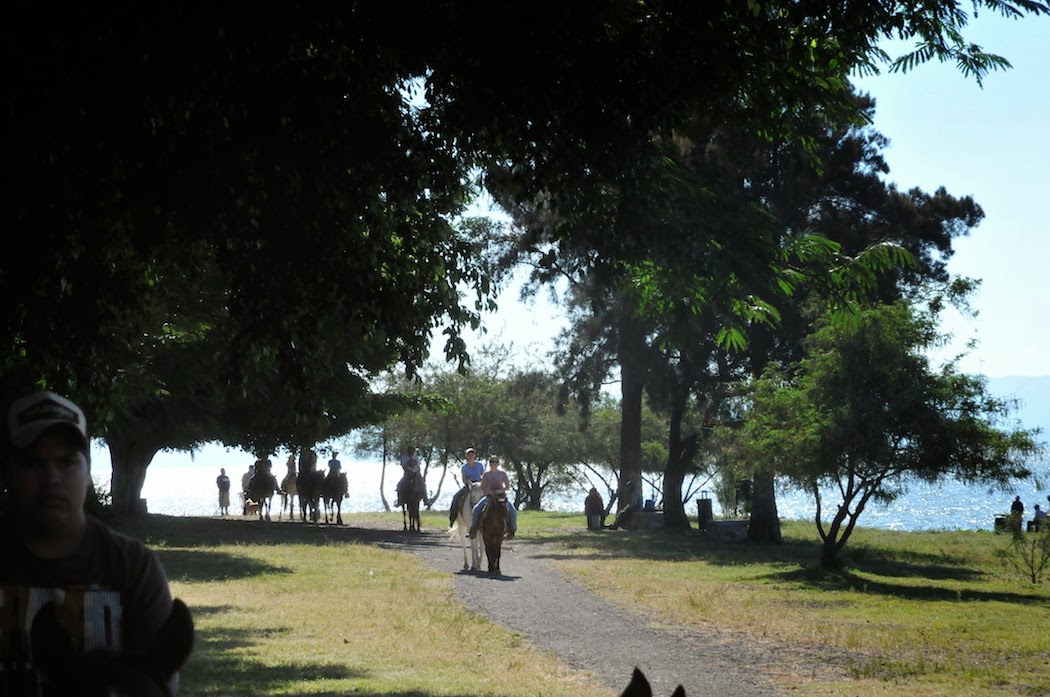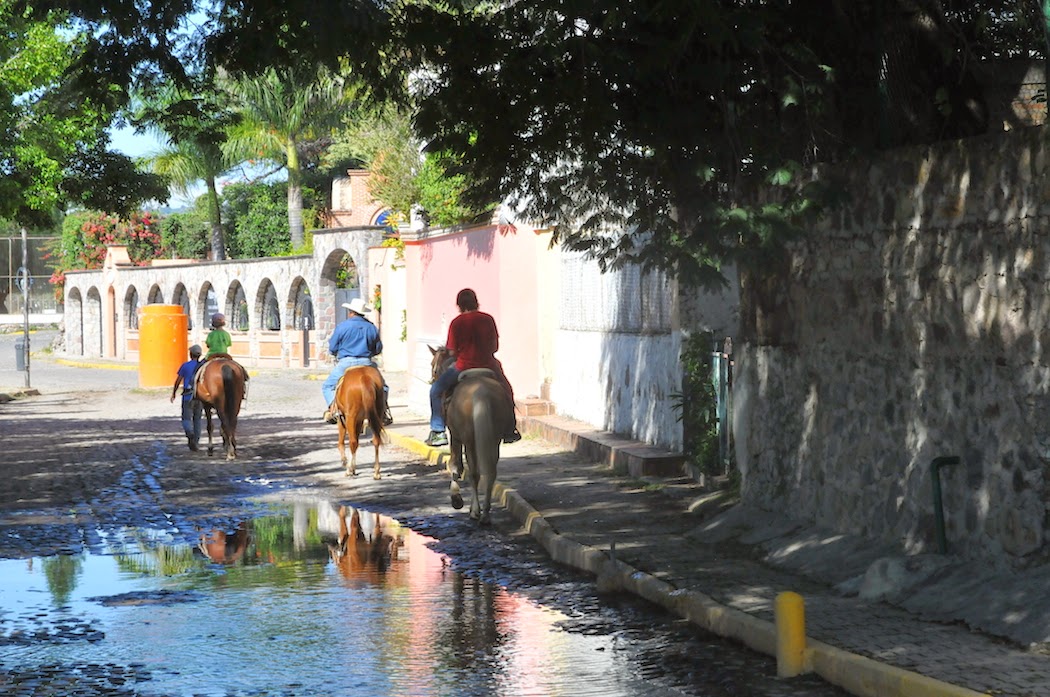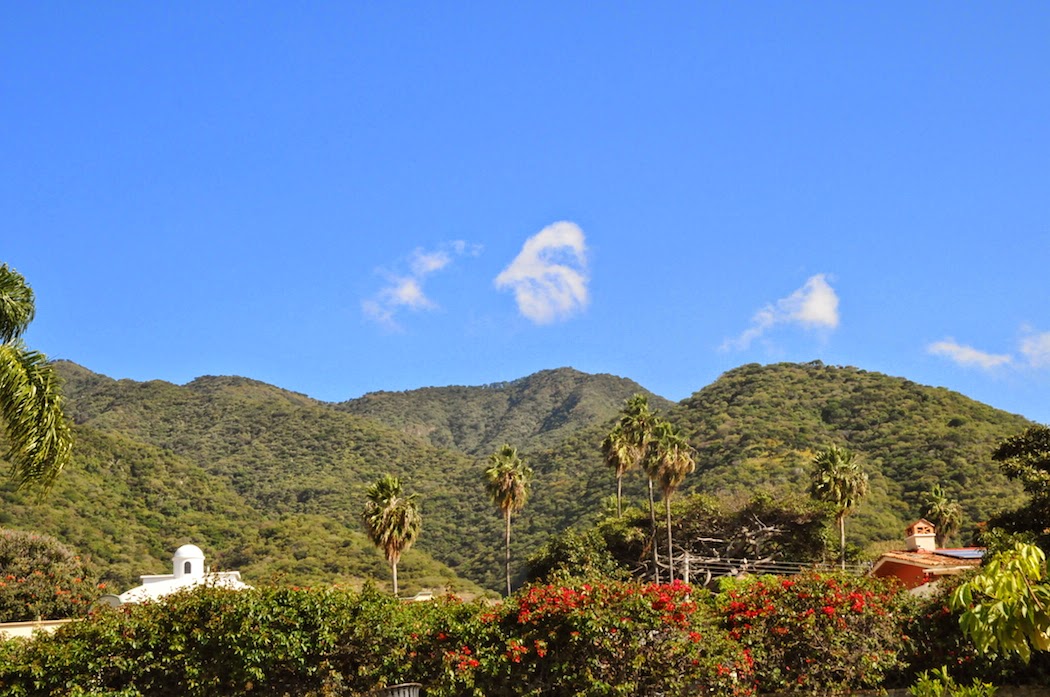When we moved to Mexico, we knew that one of its main celebrations is Día de Muertos, the Day of the Dead. It covers a few days, actually: Halloween on October 31, the Day of the Innocents (for children and infants who have died) on November 1, and the actual Day of the Dead on November 2 for adults who have died. You can get a good overview of it
here in Wikipedia. The basic gist of the holiday is to honor those who have died, to remember them, and, for some, to create a way for the souls of those who have died to come visit.
 |
| Catrinas decorate buildings and a sculpture in Tlaquepaque |
I've always been uncomfortable with the concept; I have vague childhood memories of All Soul's Day in the Philippines which involved people taking picnics to cemeteries on November 2, or even sleeping there. It is something very foreign to my biblical worldview, and in some ways it's repulsive. For me, the dead are gone. Those who were Christ-followers I believe I will see again someday. We honor them in stories we tell, and special things we have that belonged to them, but our stories and things we retain aren't held in order to try to bring them back. Rather, I am looking forward to a reunion. Because of this worldview, I don't believe souls return. However, also because of this worldview, I believe there are fallen angels, demons, who are alive and active and ready to deceive in whatever way works. That, to me, brings a dangerous element into honoring and celebrating the dead.
All that aside, one part of Día de Muertos we weren't familiar with or prepared for were the Altars de Muertos (altars for the dead). We learned about them a couple months ago when another American prof from the university was telling us about the wonderful altar displays that the university put up for the Day of the Dead, and how we would really love to go and see them all. "So elaborate and beautiful," she said. Altars? Kraig and I looked at each other puzzled. We asked a few questions, but didn't get much information. Then at the beginning of this month, Jon's kindergarten newsletter mentioned that his class would be making an altar for Día de Muertos. I thought at the time I should ask more about it, but I let it go until the other week when the teachers started to talk about the Halloween celebration and the altars. Suddenly it was something we had to really think about.
 |
| A sugar calavera |
Talk about complicated. From what we can gather, the altars are shrines set up in honor of loved ones who have died, or famous people, or whomever. Ev's class is doing one dedicated to Walt Disney (which, to tell the truth, made me laugh since Disney was a proponent of cryogenics and didn't think he was really going to die permanently....). Some have these altars primarily to remember and honor someone. But the altars are also steeped in traditions that lend to a desire to bring souls of departed loved ones near. The altars are decorated with marigolds (cempasuchil) which are thought to welcome spirits. Sugar candy skulls,
calaveras, are used for decorations, and a special bread is made that will help nourish the souls. While the school is totally secular, and the purpose of its altars is an excuse to party and learn about Mexico's cultural history, we realized that we had to figure out where our line between honoring and worshiping was--and quickly. The kids had notes sent home requesting different pieces for the altars, and parents were invited to come tour on Thursday.
 |
| Jon & Ev's skeletal creation today |
Not only was there the question of how we honor the dead, we needed to know how we live with a biblical worldview in a postmodern world and in a country with heavy superstitions. What stand do we take, and how do we do it without offending the relationships we have started to build? I've grown to appreciate the teachers at the kids' school, and they are more and more welcoming of my help. I didn't want to throw a monkey wrench into the works by announcing that we couldn't in good conscience have the kids take part in the celebration. And what about the kids? Clare, in her true fashion, has eschewed the whole thing. She hates the skeletons with religious fervor--too zealous, as usual. We're constantly trying to help her understand the difference between standing up for what she believes while tempering it with love and grace. Evie and Jon ask questions, but they're more focused on what they will miss. Ev wants to see Ms. Mariana's surprise, and Jon has taken to drawing catrinas and skulls for his teachers. To him, it's an art project. What effect would all of this have on them?
Kraig has seen it more in black and white. An altar is an altar is an altar in his mind, and that means worship or sacrifice whether one believes it or not. We don't even have altars for God under the New Covenant. The fact that the root of these altars is the Aztec human sacrifices hasn't help the case either. We've gone back and forth on it. I don't like them, but I have been more torn by the question of how to bow out graciously without creating huge barriers. We were able to talk with other believers who have lived here a good bit longer than us, and they confirmed some of our concerns, which helped. I agreed I would talk with Ms. Mariana and see what parts of the celebration revolved around the altars so we would know what the kids would have to miss.
 |
| cempasuchil |
The good news is, I did get to talk to Ms. Mariana today and she was very understanding and gracious. She was also able to explain more of the details of the celebration to me, which solidified my resolve that this isn't the best holiday for our family to participate in. I want to learn more about it, but mostly because I hate to hold a view without fully understanding where another is coming from and I like to be able to discuss things. For now, though, we need to step back and watch from a distance. We'll see what more we learn in the coming year.
































































































